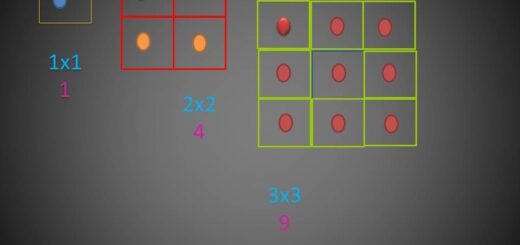Einstein’s Unfinished Symphony: The Unified Field Theory

Albert Einstein’s unified field theory was an attempt to find a theoretical framework that could explain all of the fundamental forces of nature within a single framework. Einstein believed that gravity, electromagnetism, and the strong and weak nuclear forces were all manifestations of a single underlying field. He worked on this theory for most of his life but never achieved a complete or successful unified field theory.
Einstein’s quest for a unified field theory was driven by his belief in the simplicity and elegance of the universe. He believed that there must be a single underlying principle that could explain all of the diverse phenomena of nature. He also believed that such a theory would be a major breakthrough in our understanding of the universe.
Einstein’s work on unified field theory was based on his theory of general relativity, which is a theory of gravity that he published in 1915. General relativity is a very successful theory that has been verified by many experiments and observations. However, it is not a complete theory of physics, as it does not explain electromagnetism or the strong and weak nuclear forces.
Einstein hoped to extend general relativity to a unified field theory that could explain all of the fundamental forces. He worked on this problem for many years, but he never achieved a complete or successful theory.
There are a number of reasons why Einstein was unable to find a unified field theory. One reason is that the fundamental forces of nature are very different from each other. Gravity is a long-range force that acts between all objects with mass, while electromagnetism is a short-range force that acts between charged particles. The strong and weak nuclear forces are even shorter-range forces that act between the particles that make up the nucleus of an atom.
Another reason why Einstein was unable to find a unified field theory is that the quantum theory of fields, which is the most successful theory of quantum mechanics, is incompatible with general relativity. The quantum theory of fields describes particles as excitations of underlying fields, while general relativity describes gravity as a curvature of spacetime. It has been very difficult to find a way to reconcile these two very different theories.
Despite the challenges, many physicists continue to work on the problem of unified field theory. They believe that such a theory would be a major breakthrough in our understanding of the universe.
Here are some of the key ideas that have been proposed in the search for a unified field theory:
- String theory: String theory is a theory of quantum gravity that proposes that the fundamental building blocks of the universe are tiny, one-dimensional vibrating strings. String theory has the potential to explain all of the fundamental forces of nature, but it is a very complex and difficult theory to understand.
- Loop quantum gravity: Loop quantum gravity is another theory of quantum gravity that proposes that spacetime is not smooth and continuous, but is instead made up of tiny loops. Loop quantum gravity is also a very complex and difficult theory to understand.
- Noncommutative spacetime: Noncommutative spacetime is a theory that proposes that the coordinates of spacetime do not commute. This means that the order in which you multiply the coordinates of spacetime can affect the result. Noncommutative spacetime is a very radical idea, and it is not clear whether it can be used to develop a successful unified field theory.
The search for a unified field theory is one of the most important challenges facing theoretical physics today. A successful theory would be a major breakthrough in our understanding of the universe and would have profound implications for our understanding of physics, cosmology, and other fields.
A Brief Overview Of String Theory

Image Credit
String theory is a theoretical framework in which the fundamental building blocks of the universe are tiny, one-dimensional vibrating strings. These strings are much smaller than the smallest particles that have been observed in experiments, and they are thought to vibrate at different frequencies. The different frequencies of vibration correspond to different particles, such as electrons, quarks, and photons.
String theory has the potential to explain all of the fundamental forces of nature, including gravity, electromagnetism, and the strong and weak nuclear forces. This is because the different vibrations of the strings can be interpreted as the exchange of different particles. For example, the exchange of a gluon, which is the particle that mediates the strong nuclear force, corresponds to the exchange of a vibrating string.
String theory is a very complex and difficult theory to understand, and it is not yet clear whether it is correct. However, it is one of the most promising candidates for a unified field theory, and many physicists believe that it could be the key to understanding the universe at its most fundamental level.
Here are some of the key features of string theory:
- Extra dimensions: String theory requires that there are 10 or 11 dimensions in space and time. The extra dimensions are curled up so small that we cannot observe them directly.
- Duality: String theory exhibits a property called duality, which means that different descriptions of the same physical system can be mapped to each other. This can be a powerful tool for understanding the theory.
- Holography: String theory suggests that there is a holographic relationship between two-dimensional surfaces and higher-dimensional spaces. This means that all of the information about a higher-dimensional space can be encoded on a two-dimensional surface, like a hologram.
String theory is a very active area of research, and there are many different approaches to the theory. It is not yet clear which of these approaches is correct, and it is possible that a completely new approach will be needed to solve the remaining problems in the theory. However, string theory is one of the most promising candidates for a unified field theory, and it is likely to play a major role in our understanding of the universe in the years to come.
A Brief Overview Of Loop Quantum Gravity

Loop quantum gravity (LQG) is a theory of quantum gravity that proposes that spacetime is not smooth and continuous, but is instead made up of tiny loops. These loops are thought to be the smallest possible units of space, and they are connected to each other in a network. The different ways in which the loops can be connected correspond to different geometries of spacetime.
LQG has the potential to explain all of the fundamental forces of nature, including gravity, electromagnetism, and the strong and weak nuclear forces. This is because the different ways in which the loops can be connected can be interpreted as the exchange of different particles. For example, the exchange of a graviton, which is the hypothetical particle that mediates gravity, corresponds to the exchange of a loop that is connected in a particular way.
LQG is a very complex and difficult theory to understand, and it is not yet clear whether it is correct. However, it is one of the most promising candidates for a unified field theory, and many physicists believe that it could be the key to understanding the universe at its most fundamental level.
Here are some of the key features of LQG:
- Quantization of geometry: LQG quantizes the geometry of spacetime, which means that it describes the geometry of spacetime in terms of discrete units. This is in contrast to classical general relativity, which describes spacetime as a smooth and continuous manifold.
- Nonperturbative formulation: LQG is a nonperturbative formulation of quantum gravity, which means that it does not rely on perturbation theory. This is important because perturbation theory is not well-suited to describing gravity at very strong or very weak fields.
- Background independence: LQG is a background-independent formulation of quantum gravity, which means that it does not rely on a background metric or spacetime. This is important because the background metric or spacetime is not well-defined in the presence of strong gravitational fields.
LQG is a very active area of research, and there are many different approaches to the theory. It is not yet clear which of these approaches is correct, and it is possible that a completely new approach will be needed to solve the remaining problems in the theory. However, LQG is one of the most promising candidates for a unified field theory, and it is likely to play a major role in our understanding of the universe in the years to come.
A Brief Overview Of Noncommutative Spacetime
Noncommutative spacetime is a theoretical framework in which the coordinates of spacetime do not commute. This means that the order in which you multiply the coordinates of spacetime can affect the result. For example, in ordinary commutative spacetime, it does not matter whether you multiply the x-coordinate by the y-coordinate or vice versa, the result will be the same. However, in noncommutative spacetime, the result will be different depending on the order in which you multiply the coordinates.
Noncommutative spacetime has the potential to explain all of the fundamental forces of nature, including gravity, electromagnetism, and the strong and weak nuclear forces. This is because the noncommutativity of spacetime can be interpreted as a modification of the Heisenberg uncertainty principle. The Heisenberg uncertainty principle states that it is impossible to know both the position and momentum of a particle with perfect accuracy. However, in noncommutative spacetime, the uncertainty principle is modified so that it is possible to know both the position and momentum of a particle with perfect accuracy. This modification of the uncertainty principle can be used to derive the equations of motion for the fields that mediate the fundamental forces.
Noncommutative spacetime is a very complex and difficult theory to understand, and it is not yet clear whether it is correct. However, it is one of the most promising candidates for a unified field theory, and many physicists believe that it could be the key to understanding the universe at its most fundamental level.
Here are some of the key features of noncommutative spacetime:
- Modification of the Heisenberg uncertainty principle: Noncommutative spacetime modifies the Heisenberg uncertainty principle so that it is possible to know both the position and momentum of a particle with perfect accuracy.
- Emergence of gravity: Noncommutative spacetime can be used to derive the equations of motion for the fields that mediate the fundamental forces, including gravity.
- Explanation of anomalies: Noncommutative spacetime can explain some observed anomalies in particle physics, such as the violation of CP symmetry.
Noncommutative spacetime is a very active area of research, and there are many different approaches to the theory. It is not yet clear which of these approaches is correct, and it is possible that a completely new approach will be needed to solve the remaining problems in the theory. However, noncommutative spacetime is one of the most promising candidates for a unified field theory, and it is likely to play a major role in our understanding of the universe in the years to come.














